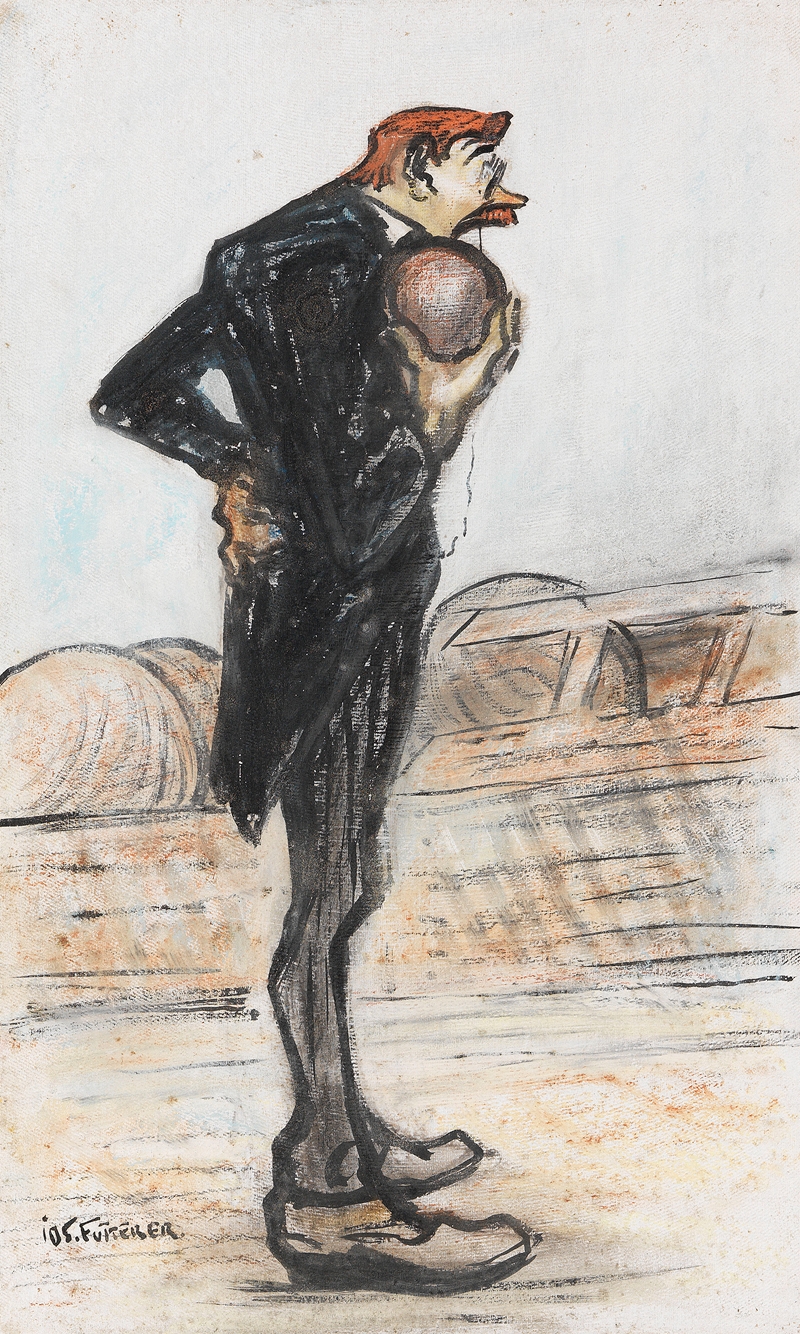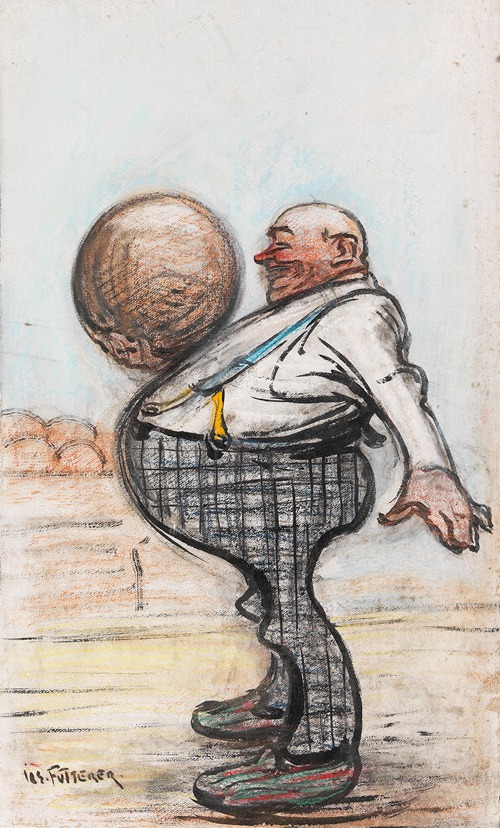
Joseph Futterer was a German draftsman, painter, and etcher. He was the brother of August Futterer.
After moving to Munich, Futterer was rejected by the local art academy because Franz von Defregger believed that he had nothing more to learn there. At the turn of the century, he began working for the Meggendorfer-Blätter, Jugend, and Simplicissimus. In 1905, Futterer participated in the IX International Art Exhibition in Munich's Glaspalast with a pastel painting. From 1909 onwards, Impressionism became increasingly important in his works, with figurative themes such as interiors, landscapes, and flower pieces.
In 1910, another exhibition followed in Mannheim, and in the same year a “Collective Exhibition Josef Futterer” was held at the Thannhauser Gallery in Munich. In 1911, the painting “Kopistin in der Galerie” (Copyist in the Gallery) was acquired for the Neue Pinakothek. In 1912, he and his brother August Futterer were made honorary citizens of Mondfeld. They established a foundation in Mondfeld. In 1915, King Ludwig II appointed Josef Futterer Royal Bavarian Professor of the Academy of Fine Arts in Munich. He also produced sketches and portraits of artists from Munich's pub scene.
Josef Futterer moved to Berlin in 1923 and, at the suggestion of Max Liebermann, joined the Berlin Secession. He returned to Munich in 1928, and in the same year the Heinemann Gallery exhibited his works. He died in Munich on February 20, 1930, at the age of 59. During the Second World War, 50 paintings that had been taken to Würzburg were destroyed in the final days of the war, and his studio apartment in Munich, where most of his estate was kept by his widow Klara Futterer, was destroyed. The Lenbachhaus has two paintings in its collection: Landscape with Red Parasol (acquired in 1952) and Bouquet of Flowers (acquired in 1928).

